This post emphasizes understanding and implementing the Force Sync of Browser Data without Consent Policy Using Intune. We will explore how to apply this policy using Intune’s Configuration Profiles. The main goal is to acquire understanding and hands-on experience in effectively Forcing synchronization of browser data and does not show the sync consent prompt Policy Using Intune.
Force Sync of Browser Data without Consent Policy enforces data synchronization in Microsoft Edge and prevents users from disabling the sync feature. If you do not configure this policy, users can turn sync on or off. This policy is specifically designed for Microsoft Edge and focuses on data synchronization.
However, by enabling this policy, users will be unable to disable sync. To ensure the intended functionality of this policy, the ‘BrowserSignin’ (Browser sign-in settings) policy should either be unconfigured or set to enabled. If the ‘ForceSync‘ (Force synchronization of browser data and bypassing the sync consent prompt) is disabled, the ‘BrowserSignin’ policy will not take effect.
Similarly, the ‘SyncDisabled‘ (Disable synchronization of data using Microsoft sync services) policy must be unconfigured or set to False. If set to True, the ‘ForceSync’ policy will not take effect. The following values can be assigned to the ‘ForceSync’ policy: 0 = Do not automatically initiate sync and display the sync consent prompt (default behavior), 1 = Compel sync to be enabled for Azure AD/Azure AD-Degraded user-profiles and bypass the sync consent prompt.
By understanding and configuring these policies appropriately, administrators can control the synchronization of data in Microsoft Edge and ensure that it aligns with their desired settings and requirements.
- Setting Up MS Edge Homepage using Intune
- Turn off Data Execution Prevention for Explorer using Intune
Force Sync of Browser Data without Consent Policy Using Intune
To apply the Force Sync of Browser Data without Consent Policy Using Intune, follow the steps stated below:
- Sign in to the Intune Admin Center portal https://intune.microsoft.com/.
- Select Devices > Windows > Configuration profiles > Create a profile.
In Create Profile, Select Windows 10 and later in Platform, and Select Profile Type as Settings catalog. Click on Create button.
| Platform | Profile Type |
|---|---|
| Windows 10 and later | Settings Catalog |
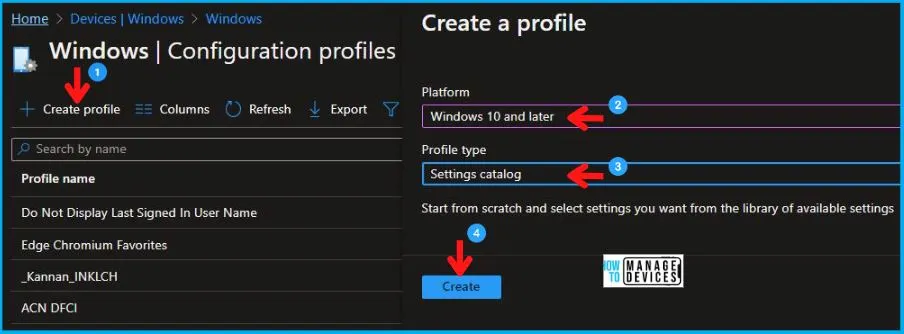
On the Basics tab pane, provide a name for the policy as “Force Sync of Browser Data without Consent Policy.” Optionally, you can enter a description for the policy and then proceed by selecting “Next.
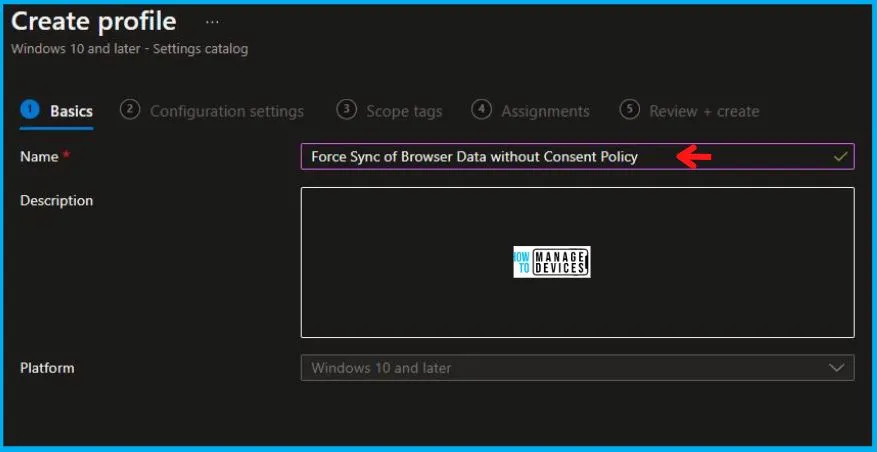
Now in Configuration settings, click Add Settings to browse or search the catalog for the settings you want to configure.
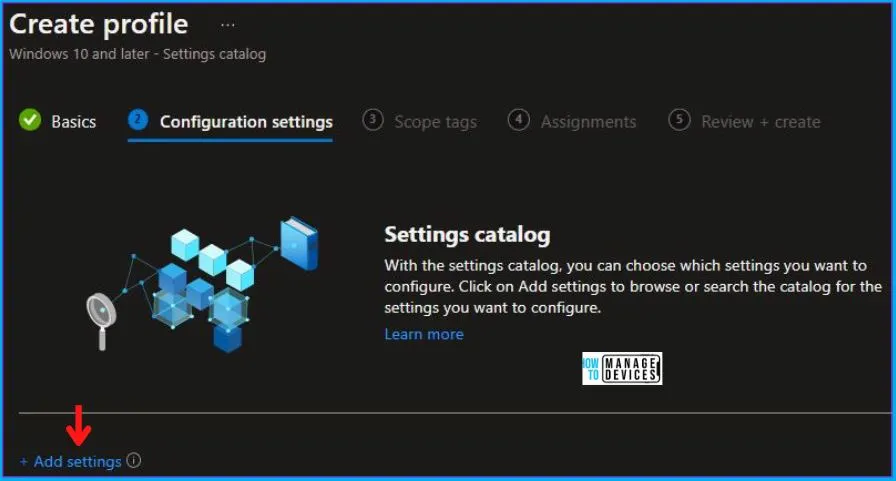
In the Settings Picker windows, search by the keyword Synchronization, among many, you will see one category by the name of Microsoft Edge, and select this.
When you select the option stated above, you must choose Force synchronization of browser data and do not show the sync consent prompt. After selecting your setting, click the cross mark in the right-hand corner.
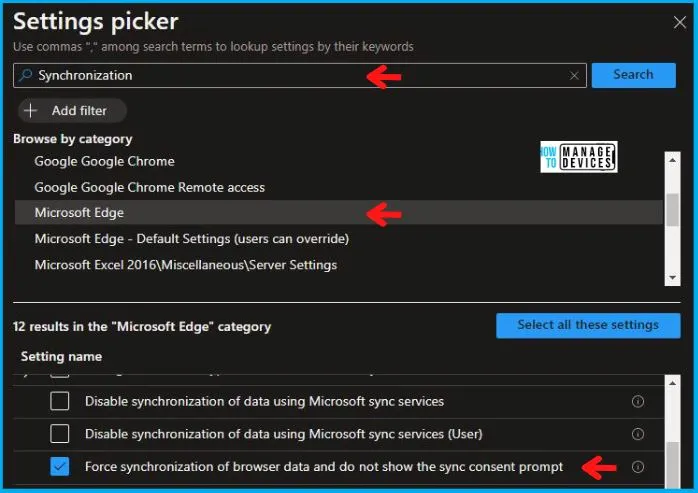
Now, in the Microsoft Edge category, set Force synchronization of browser data and do not show the sync consent prompt to Enabled, as shown below in the image.
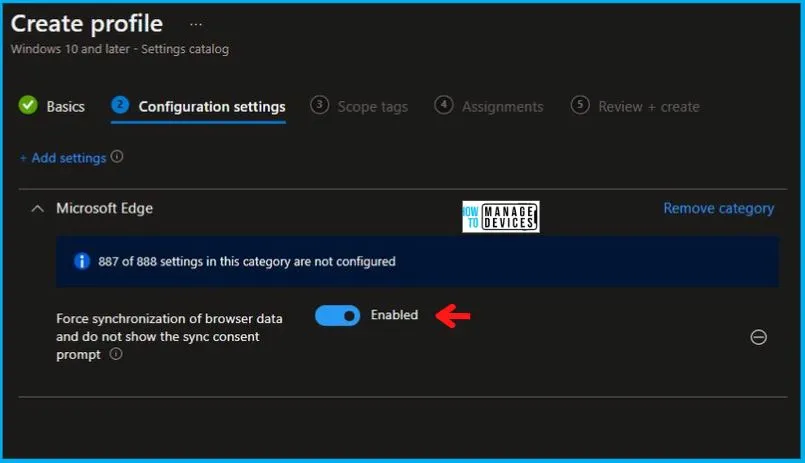
Using Scope tags, you can assign a tag to filter the profile to specific IT groups. One can add scope tags (if required) and click Next to continue. Now in Assignments, in Included Groups, you need to click on Add Groups, choose Select Groups to include one or more groups, and click Next to continue.
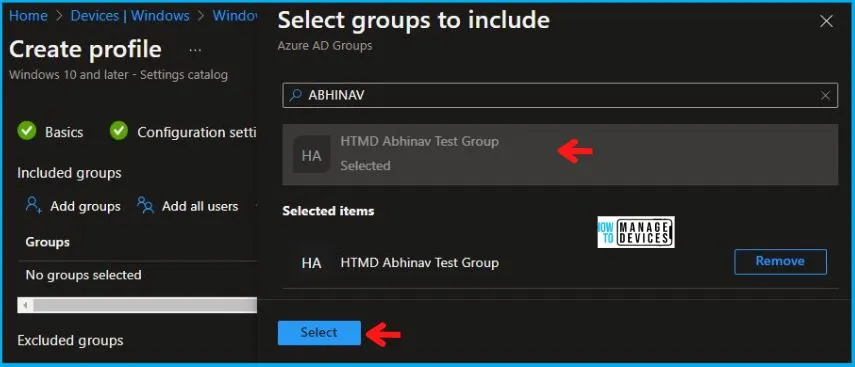
In the Review + Create tab, you need to review your settings. After clicking on Create, your changes are saved, and the profile is assigned.
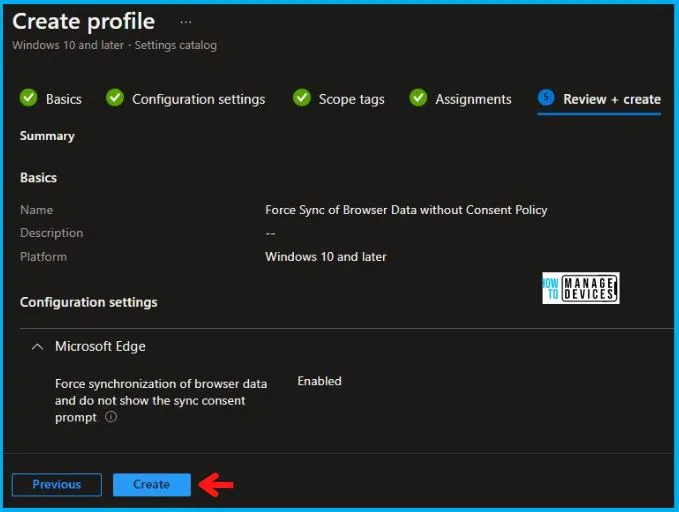
Upon successfully creating the “Force Sync of Browser Data without Consent Policy,” a notification will appear in the top right-hand corner, confirming the action. You can also verify the policy’s existence by navigating to the Configuration Profiles list, where it will be prominently displayed.
Your groups will receive your profile settings when the devices check in with the Intune service. The Policy applies to the device.
Intune Report for Force Sync of Browser Data without Consent Policy
From Intune Portal, you can view the Intune settings catalog profile report, which provides an overview of device configuration policies and deployment status.
To track the assignment of the policy, you need to select the relevant policy from the Configuration Profiles list. By reviewing the device and user check-in status, you can determine if the policy has been successfully applied. If you require more detailed information, you can click on “View Report” to access additional insights.
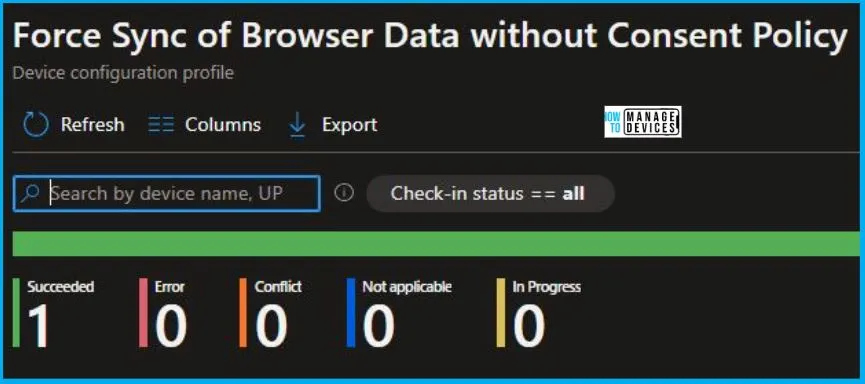
Intune MDM Event Log
To verify the successful implementation of String or integer policies on Windows 10 or 11 devices through Intune, you can leverage event IDs 813 and 814. These event IDs provide valuable insights into the application status of the policy as well as the specific value assigned to the policy on those devices. In the case of this particular policy, the value is String and is linked to the event ID 814.
By analyzing these event IDs, you can gain a clear understanding of the policy’s application status and the corresponding value associated with it on the devices in question.
To confirm this, you can check the Event log path – Applications and Services Logs – Microsoft – Windows – Devicemanagement-Enterprise-Diagnostics-Provider – Admin.
MDM PolicyManager: MDM PolicyManager: Set policy string, Policy: (ForceSync), Area: (microsoft_edge86~Policy~microsoft_edge), EnrollmentID requesting merge: (FFCDEF31-E97E-4DBE-BE54-1410A26176CC), Current User: (Device), String: (<enabled />), Enrollment Type: (0x6), Scope: (0x0).
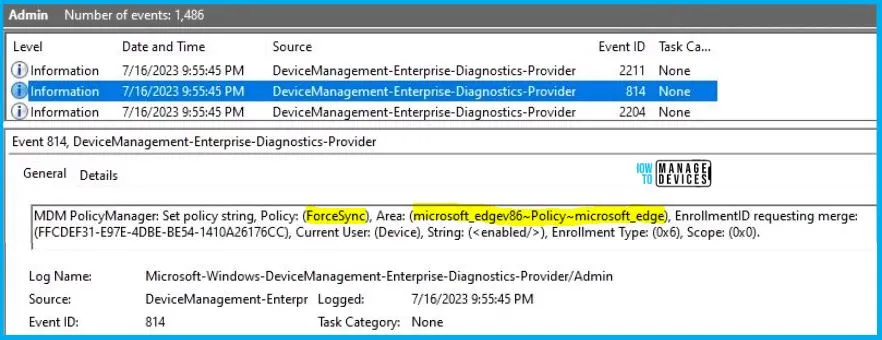
By reviewing the above log entry in the Event Viewer, you will come across essential information, including the Area and Enrollment ID. These details play a significant role in identifying the corresponding registry path. To locate the specific information, please consult the table provided below:
| Area | Policy | String | Scoped | Event ID |
|---|---|---|---|---|
| microsoft_edge86~Policy~microsoft_edge | ForceSync | Enabled | Device | 814 |
The details presented in the table above for the Force Sync of Browser Data without Consent Policy Using Intune can be employed to access the registry settings that hold the group policy configurations on a specific computer. To accomplish this, you can execute “REGEDIT.exe” on the target computer and navigate to the precise registry path where these settings are stored.
- Computer\HKEY_LOCAL_MACHINE\SOFTWARE\Microsoft\PolicyManager\providers\FFCDEF31-E97E-4DBE-BE54-1410A26176CC\default\Device\microsoft_edge86~Policy~microsoft_edge
When you navigate to the above path in the Registry Editor, you will find the registry key with the name ForceSync. Refer to the table and image below.
| Registry Name | Value |
|---|---|
| ForceSync | Enabled |

Author
Abhinav Rana is working as an SCCM Admin. He loves to help the community by sharing his knowledge. He is a B.Tech graduate in Information Technology.
